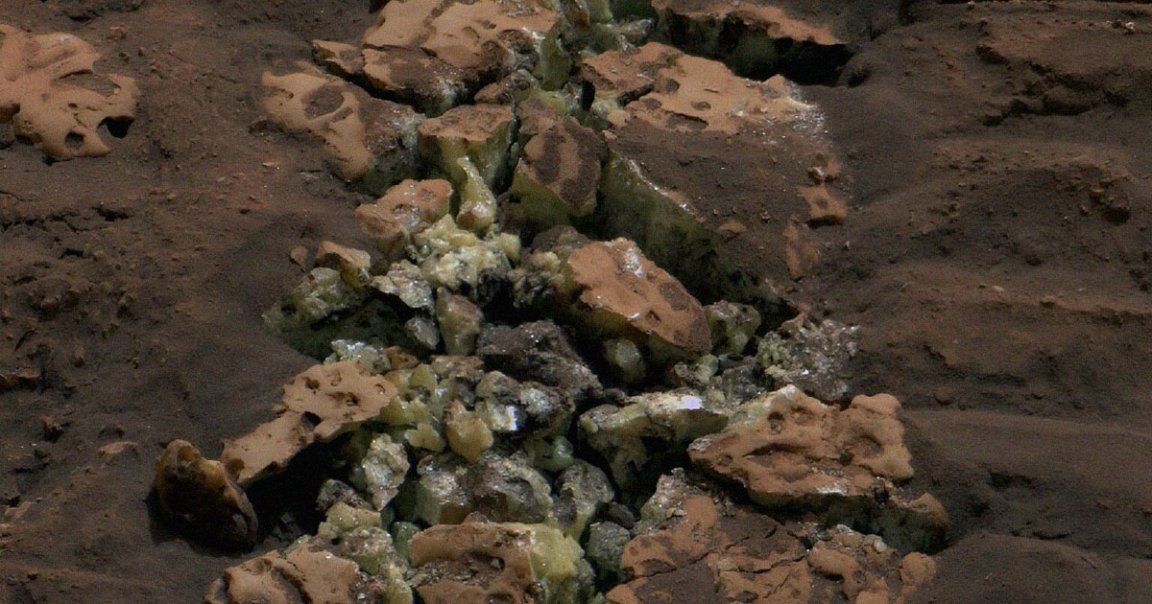
Pop Rocks
NASA’s Curiosity Mars rover inadvertently crushed a rock while exploring a sulfates-rich area — and revealed a treasure of glinting, yellow crystals.
And according to the space agency, it’s unlike anything the rover has come across so far. Instead of sulfur-based minerals, which have been discovered several times already in the area, the cracked-open rock turned out to be pure, elemental sulfur.
“Finding a field of stones made of pure sulfur is like finding an oasis in the desert,” said Curiosity project scientist Ashwin Vasavada in a NASA statement. “It shouldn’t be there, so now we have to explain it. Discovering strange and unexpected things is what makes planetary exploration so exciting.”
Sulfur Surprise
Curiosity made the discovery while going “off-roading,” per NASA, in a valley called Gediz Vallis that snakes down Mount Sharp, an enormous crater that forms a 3.4-mile peak in its center.
The rover has been exploring the mountain for just under a decade now and has made several fascinating discoveries since. Scientists believe Gediz Vallis was carved into the Martian surface by liquid water and debris billions of years ago.
Curiosity has been exploring huge mounds of debris that such water channels — or perhaps landslides — may have deposited.
While how this debris formed remains a bit of a mystery, scientists have concluded that the material was once soaked with water.
“This was not a quiet period on Mars,” said Planetary Science Institute scientist and deputy principal investigator of Curiosity’s Mastcam Becky Williams. “There was an exciting amount of activity here. We’re looking at multiple flows down the channel, including energetic floods and boulder-rich flows.”
Unfortunately, the latest treasure unearthed by Curiosity is too small for it to drill through with its 7-foot robotic arm.
But it has already spotted its next target: a boulder dubbed “Mammoth Lakes,” which could shed more light on the sulfurous mystery.
More on Curiosity: NASA Mars Rover Following Path of What Appears to Be Ancient River